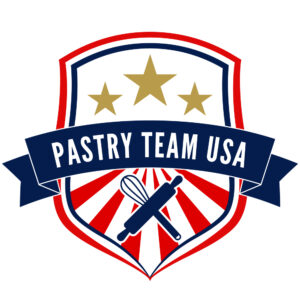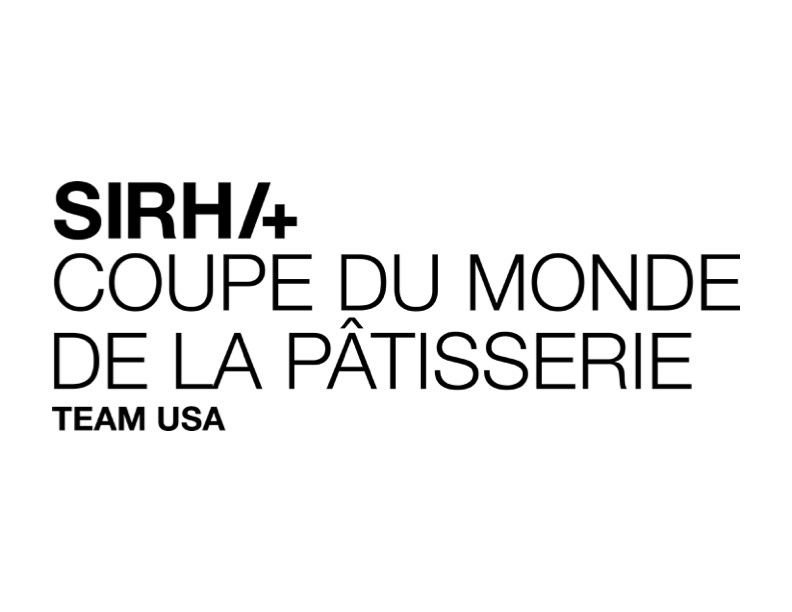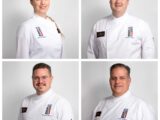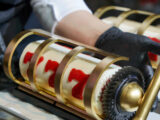For the second of the three artistic creations or centerpieces, each team must present a chocolate artistic creation and Valrhona chocolate block.
As with the sugar artistic creation, the chocolate centerpiece, including the base, can be no more than 165 cm or 5.4 feet in height. The non-edible base, which each team is required to bring, will be used only to hold the chocolate sculpture.
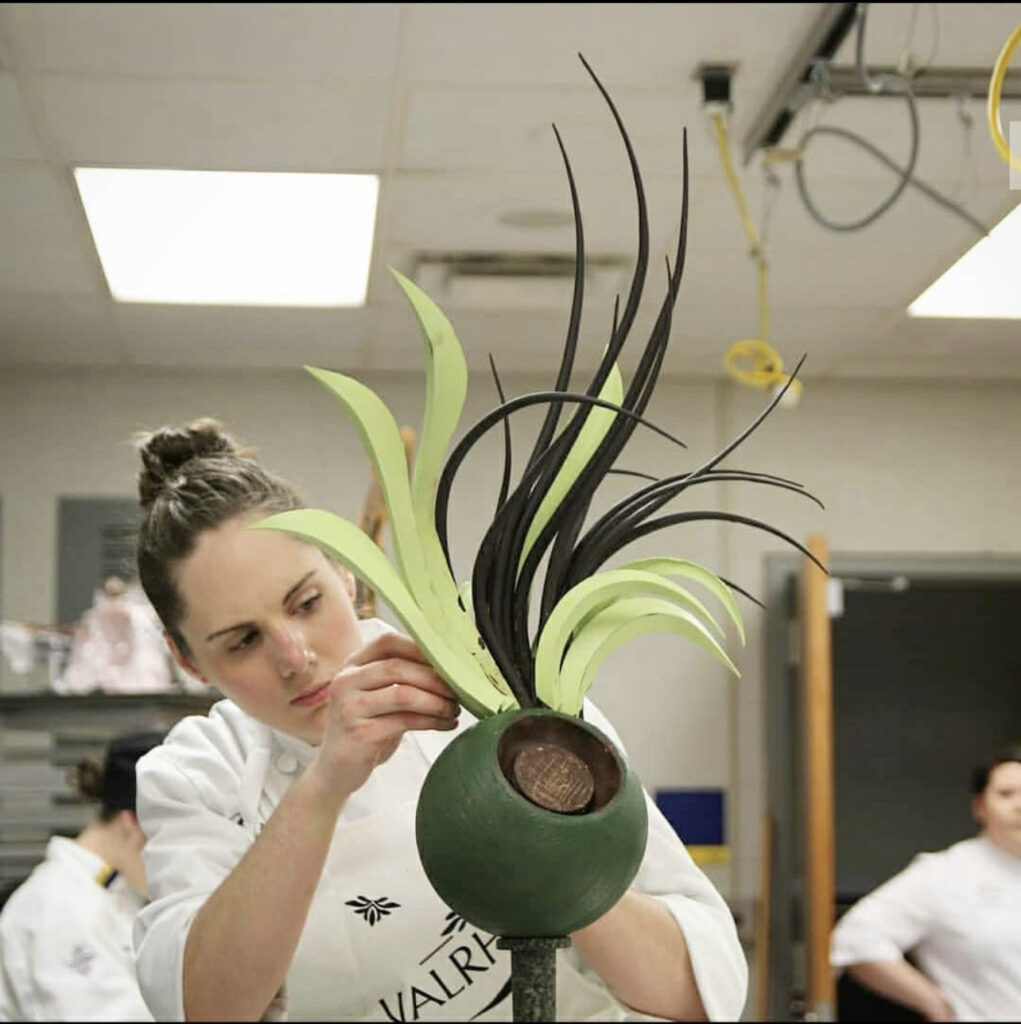
Additionally, like the sugar sculpture, the chocolate artistic creation must be composed of various methods of chocolate. The composition is based on a percentage expressed by volume based on the weight of the supplied chocolate.
The sculpture percentages, which the Jury will closely inspect, must consist of:
- 25% hollow molding
- 30% shaped and carved chocolate – circle molding and stenciling are permitted with a 2 cm (0.7″) thickness
- 15% glossy chocolate – obtained through Rhodoid Sheets (rigid PVC sheets with a very smooth surface, used to obtain chocolate with a very glossy finish), molding or heat shaping
- 30% team’s discretion (excluding molding)
The chocolate sculpture must include one block of Valrhona chocolate, which will be supplied by the I.O.C. on the eve of the team’s test.
The block of Valrhona chocolate, which can be used horizontally or vertically, measures 480 mm (1.5 feet) long by 270 mm (10.6 inches) wide and 150 mm (5.9 inches) high. The rules state that the block of chocolate must be sculpted and an integral part of the chocolate artistic creation. The chocolate block cannot be “merely sculpted and placed on the buffet.” It can be used as a base for the centerpiece adding other chocolate elements to the sculpted base.
All the ingredients used in the chocolate sculpture must be chocolate-based. Food coloring to tint any chocolate may be used including titanium dioxide. However, any coloring must be done on-site during the test. The teams may bring chocolate paste already colored, however it cannot be shaped or spread. Any paste that does not adhere to the rules, will be removed by the I.O.C.
Wanting to promote a chef’s manual skills and workmanship, the use of a chocolate cutting machine – also known as a confectionary guitar, is prohibited during the test and for any work on the chocolate centerpiece. In addition, any solid molding is also prohibited.
The chocolate centerpiece must fit within the constraints of the buffet table and be easily dismantled and reconstructed in the exhibition section.
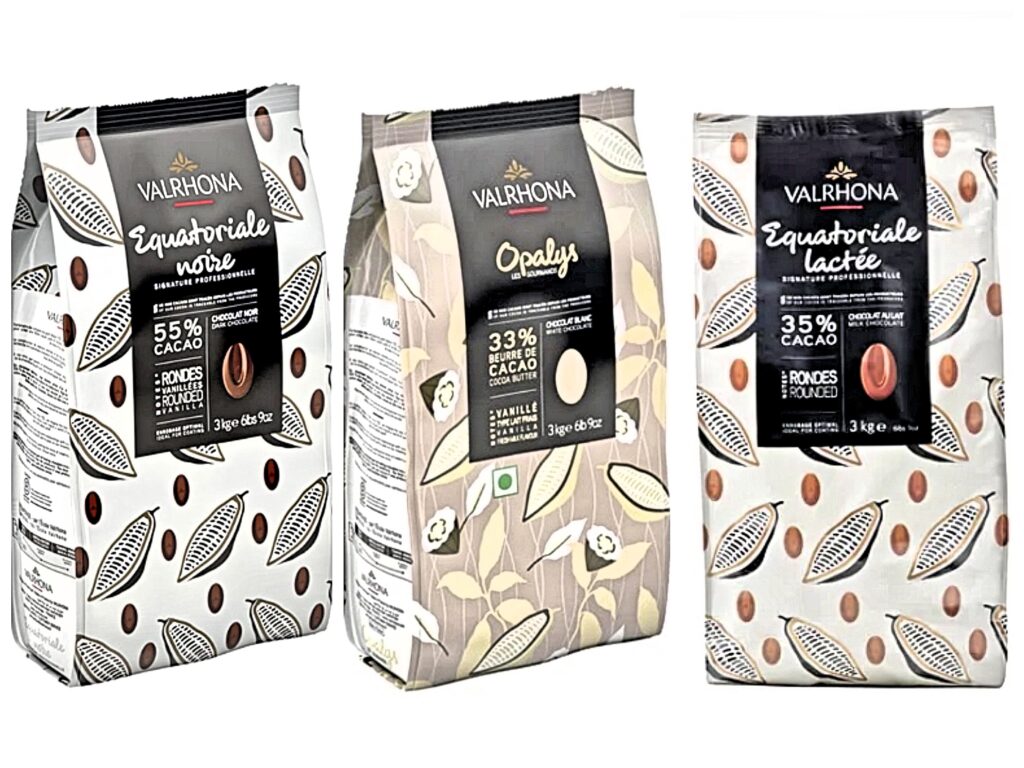
The Valrhona chocolate supplied to the teams will be Équatoriale Noire Dark Coating Chocolate, Opalys White Coating Chocolate, and Équatoriale Lacté Milk Chocolate.
The I.O.C. and Valrhona will provide each team with 18 kg (39.6 pounds) of Équatoriale Noire Dark Coating Chocolate. The night before each team’s test, a technician will put the chocolate in the tempering machines.
The chefs may use Valrhona Opalys White Coating Chocolate (maximum 6kg or 13.2 lbs) as a complement to Équatorial Noire for the chocolate sculpture. Unlike the Équatorial Noire, no temperating machine will be available to melt the white chocolate. Any melting will be the responsibility of each team.
The rules for the Oplays White Coating Chocolate, apply to the Équatoriale Lacté Milk Chocolate as well. The one difference is that cocoa butter is allowed with the Équatoriale Lacté.
The total weight of chocolate available to the teams for their artistic chocolate piece is a maximum 30 kg (66.1 pounds) – excluding the weight of the chocolate block.
Part Eight will cover the final centerpiece – the sculpted water ice creation (ice sculpture) and specifications for the buffet table.
